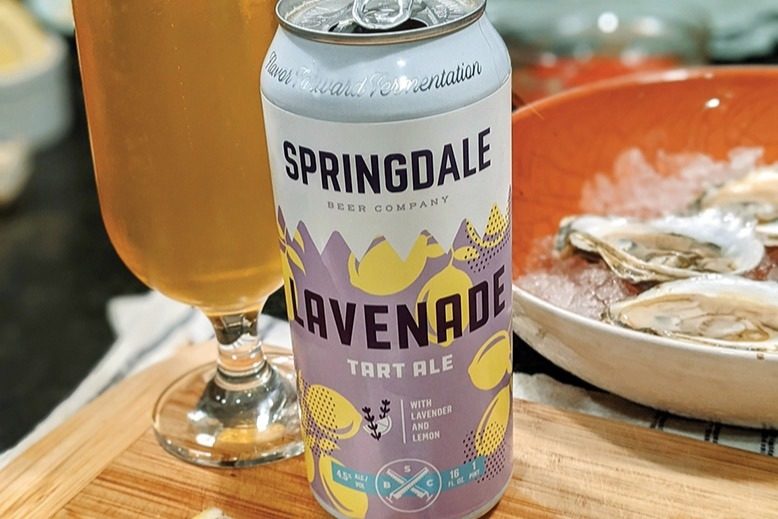
When we think of the word botanical in relation to drinks, our minds often jump to gin, which can be flavored with hundreds of herbs and plants such as juniper, coriander seed, angelica root, citrus peel and lavender. But as a growing number of craft brewers are discovering, the unique aromas and flavors of botanicals can enhance other beverages, too.
From rose hips and hibiscus to lavender and chamomile, breweries are experimenting with adding flowers to their springtime ales. This month, the Massachusetts-based Springdale Beer Co. will release its Lavenade beer, a sour ale brewed with lavender and fresh lemons that they’ve made once a year since 2019. They add dried lavender during the boil and fermentation processes, treating the purple flowers like hops (which are flowers, too, by the way). A small amount of lavender oil is later introduced to accentuate the floral aspect of the beer.
“Those flavors balance each other in really interesting ways,” says Joe Connolly, director of Springdale. “There’s a floral component that balances some of the natural acidity of the beer.”
Finding that balance requires a delicate dance. Too much lavender, and the beer tastes like liquid potpourri; too little, and the flavor goes unnoticed. “It would be easy to make [the Lavenade] feel really soapy or shampooey. You don’t want it to get way too floral,” says Connolly. “You want it to be part of the flavor and a pleasant one, and ideally, one you don’t pick out immediately. You want it to be an extra note that you recognize, but it doesn’t take over.”
Here in New Jersey, Carton Brewing in Atlantic Highlands brews with lavender, as well as cherry blossoms and roses, to make certain beers. Earlier this year, Flounder Brewing, a microbrewery in Hillsborough, made a lavender-forward farmhouse ale called Trois Bieres in collaboration with Lebanon’s Sunkin’ Silo Brew Works and Village Brewing Company in Somerville. More are on the horizon.
Beyond state lines, Poughkeepsie’s Plan Bee Farm Brewery uses farm-grown coriander in its Garden beer and farm-grown lavender in its Pastella beer. North Carolina’s Fonta Flora Brewery, as its name suggests, also relies on an array of plants to bring nuance to its offerings, including white pine needles, elderflower and yarrow.
Charles Nouwen, a Plainsboro-based advanced cicerone, sees the current fascination with flowers and herbs as a return to an older style of brewing. As an example, he points out gruit ales, which get their name from the German word for herb and were charged with botanicals rather than hops. Ancient gruits were made with any number of flora and fauna that grew in an area, including herbs, spices, flowers, barks, roots and even seaweed. “Some of these gruit beers are still alive nowadays,” he says, but they’re limited.
Flowers and other botanicals are an appealing way to introduce locality to brewing, much of which involves hops and malt grown in other parts of the country or even the world. “It’s definitely an area I can see growing in the future,” says Nouwen. “I’d love to see a sense of locale come back.”
